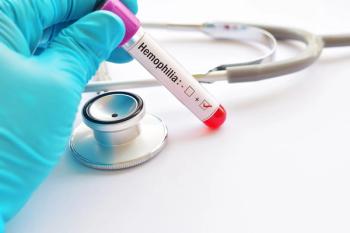
Family physicians call for national plan to transition out of COVID-19 public health emergency
HHS roadmap says some flexibilities won’t be affected, but AAFP wants assurances in policies to avoid disruptions for doctors, patients.
As the COVID-19 pandemic winds down in government policy, there’s much to be done to ensure physicians keep their doors open and patients have adequate access to health care.
President Joe Biden announced the COVID-19 public health emergency (PHE) and declaration of national emergency
Sterling N. Ransone Jr., MD, FAAFP
American Academy of Family Physicians
“Given that many of these policy changes have been in place for nearly three years and, in some cases, have significantly altered the health care coverage and delivery landscape, transitioning away from the federal FHE could cause considerable disruptions to physicians and patients,” said the Feb. 14
What’s at stake
AAFP’s current eight-page letter had recommendations for at least six areas that will affect primary care across the country:
- Protect equitable, affordable access to COVID-19 vaccines, treatments, and testing.
- Ensure physician practices can purchase and stock COVID-19 vaccines once they transition to the commercial market, including by addressing inappropriate price inflation. Once the vaccines transition to the commercial market, AAFP is “deeply concerned” about vaccine affordability for uninsured adults. If upfront costs are too high and health insurers don’t cover market prices of vaccines, physicians might choose not to offer it.
- Prevent Medicare telehealth coverage and payment disruptions. Congress has extended current telehealth flexibilities through 2024. The U.S. Centers for Medicare & Medicaid Services (CMS) needs to modify its policies to reflect that extension, and Congress and the administration need to develop permanent policies for telehealth.
- Protect patients’ access to lifesaving opioid use disorder treatment via telehealth. Flexibilities for prescriptions should be permanent, particularly not to disrupt access to buprenorphine through telehealth.
- Permanently allow Medicare payment for virtual supervision of residents and expand the Medicare primary care exception. That expansion “could help improve utilization of high-value recommended preventive care services,” especially because beneficiaries have not caught up on preventive care they did not get during the pandemic. The letter included at least 21 codes that should be included in the primary care exception.
- Remove administrative, cost, and other barriers for patients seeking treatment and federal assistance for long COVID. “Family physicians and other primary care clinicians are playing a central role in diagnosing, managing, and treating long COVID,” AAFP said.
What’s next?
The AAFP letter follows the
Generally, COVID-19 vaccines and treatments, emergency use authorizations for them, and Medicare and Medicaid telehealth flexibilities will not be affected.
HHS acknowledged some Medicare and Medicaid waivers and broad flexibilities for health care providers will end on May 11 or up to six months later. Coverage for COVID-19 testing, reporting requirements for laboratory results and immunizations, policies that affect clinical practice and supply chains, and some liability immunity thorugh the Public Readiness and Emergency Preparedness Act, all will change.
The ability to dispense controlled substances will change when the PHE ends, but the U.S. Drug Enforcement Administration will make rules to extend those “flexibilities under certain circumstances without any gap in care,” with information coming soon.
For months, physicians and government regulators have floated questions and proposals about the end of the COVID-19 PHE. In June 2022,
Newsletter
Access practical, evidence-based guidance to support better care for our youngest patients. Join our email list for the latest clinical updates.











